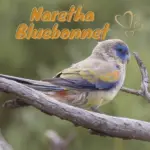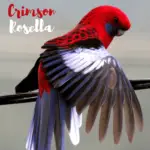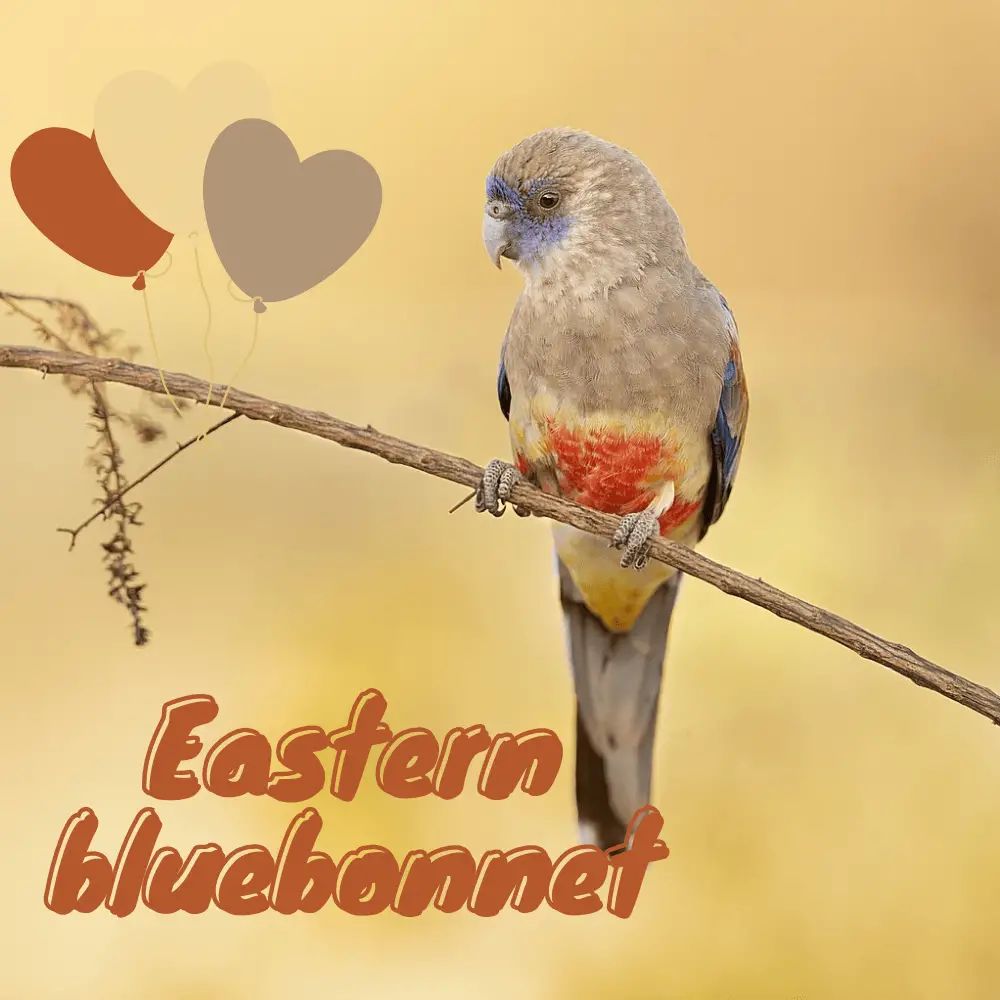
Eastern bluebonnet or Greater Bluebonnet 28 cm; 74–105 g. Forehead, lores, and face purplish-blue; head, breast, mantle, back, and rump ochre shading to yellow on the belly which has large central red blotch; bend of wing blue with most wing-coverts olive, outermost purplish-blue;
underwing coverts and outer webs of flight-feathers purplish-blue; tail greenish bronze with outer feathers purplish blue-tipped white.
Eastern bluebonnet Female possesses wing stripe. Immature-like female with a smaller red belly patch. Race haematorrhous has a greenish turquoise bend of the wing, rufous-red wing-coverts, red from belly to vent;
pallescens like nominate but paler below; narethae has blue forehead, buff flecks on breast, olive upperparts, belly yellow with red under tail-coverts, red outer lesser wing-coverts.
Systematics History
Editor’s Note: This article requires further editing work to merge existing content into the appropriate Subspecies sections. Please bear with us while this update takes place.
Bluebonnet (Northiella haematogaster)
Race haematorrhoa was previously attributed erroneously to Gould. Race narethae may be an incipient species; this is also supported by differences in mitochondrial DNA. The remaining races intergrade to some extent. Four subspecies are recognized.
Distribution
Editor’s Note: Additional distribution information for this taxon can be found in the ‘Subspecies’ article above. In the future we will develop a range-wide distribution article.
Habitat
Bluebonnet (Northiella haematogaster):
Arid and semi-arid open woodlands dominated by Myoporum, Casuarina, Callitris, Acacia, and Eucalyptus, often with a low chenopod shrub layer;
also open grassy plains, arid scrub, trees bordering watercourses, sometimes near farm buildings, water troughs. Remnant patches of mallee in cleared agricultural land are important in S of range.
Migration Overview
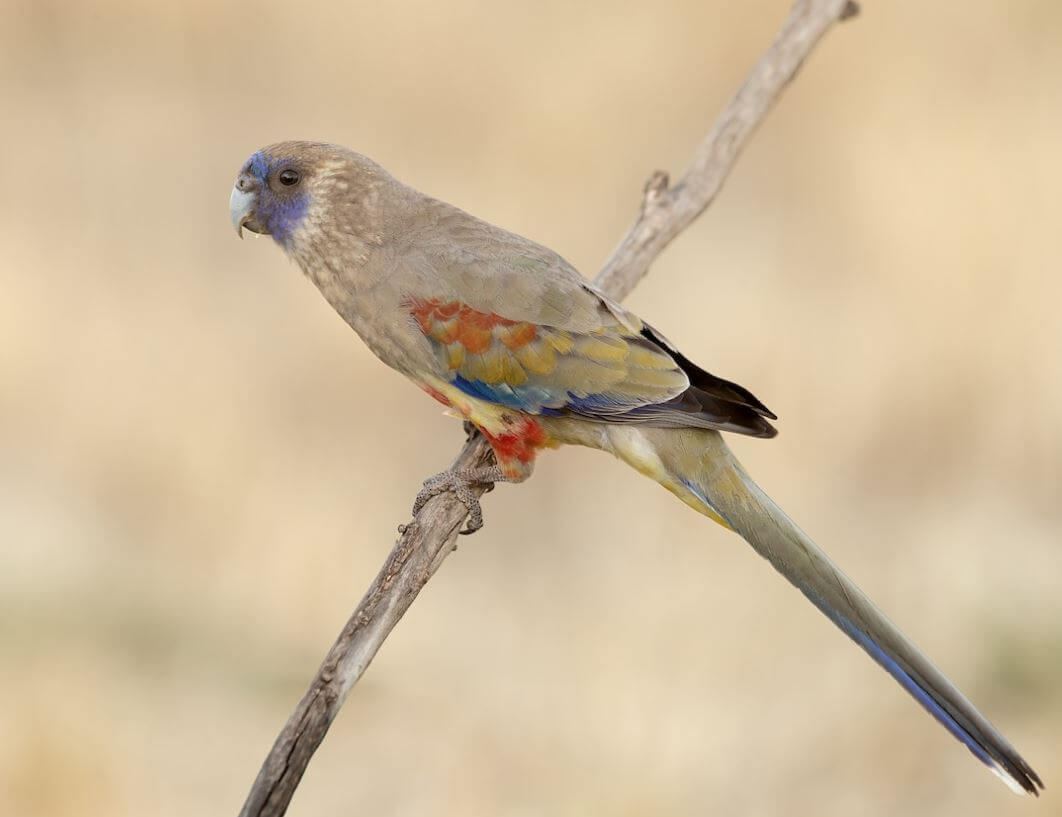
Bluebonnet (Northiella haematogaster):
Seasonal fluctuations in numbers of the race narethae appear to occur, suggesting local movements in response to food availability, but otherwise no evidence of movements.
Diet and Foraging
Bluebonnet (Northiella haematogaster):
Eastern bluebonnet Seeds of herbs, including Atriplex vesicarum, Kochia sedifolia, Bassia, and Amaranthus, fruit, berries, and acacia blossoms; relatively little grass seed.
Race narethae recorded taking seeds of various Acacia, also Heterodendron oleifolium, Danthonia caespitosa, Helipterum, Sonchus oleraceus and the mistletoes Amyema quandong and Lyiana exocarp, and Lepidoptera larvae extracted from acacia trunks; reported also to prefer seeds of composites, mainly Helipterum, when feeding young.
SOURCE: Guba na Nature Refuge
Sounds and Vocal Behavior
Bluebonnet (Northiella haematogaster):
The commonest Eastern bluebonnet call is a harsh emphatic “chack” or “chak-a-chack”, typically repeated in loose series. When perched also more melodious plaintive nasal notes.
Breeding
Bluebonnet (Northiella haematogaster) Jul–Dec, with some variation depending on rains, and evidence of two seasons following good rainfall.
Eastern bluebonnet Nest in a hollow in the tree; narethae often uses very stunted trees, finding the Eastern bluebonnet nest site at ground level in a fissure in the tree base, with western myall (Acacia papyrocarpa) a favoured species. Eggs 4–7; incubation lasts 19 days; nestling period c. 30 days.
Conservation Status
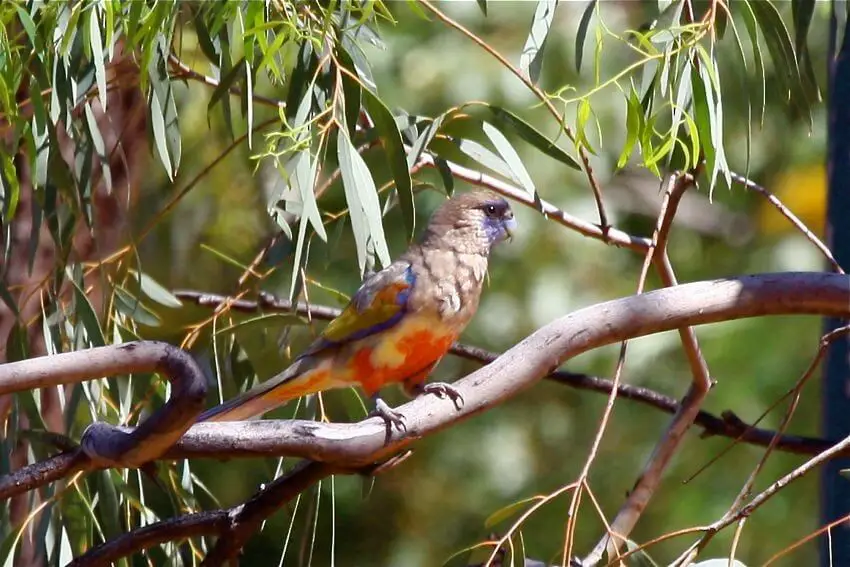 Eastern bluebonnet
Eastern bluebonnet
Bluebonnet (Northiella haematogaster)
Not globally threatened (Least Concern). CITES II. Fairly common except at the edges of the range. Clearance of native vegetation in Victoria needs to be halted to preserve shelter and nest sites, but the spread of European Starling (Sturnus vulgaris) into these habitats may result in parrots being excluded from nest holes anyway.
Race narethae suffers from illegal trapping, involving the cutting-out of nest cavities, which destroys the future potential of the site and therefore reduces the Eastern bluebonnet overall reproductive capacity; moreover, rabbit grazing may have been preventing the regeneration of favored nest tree species.

